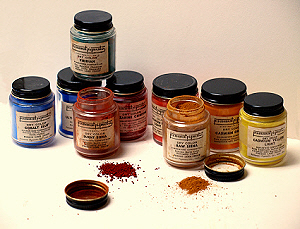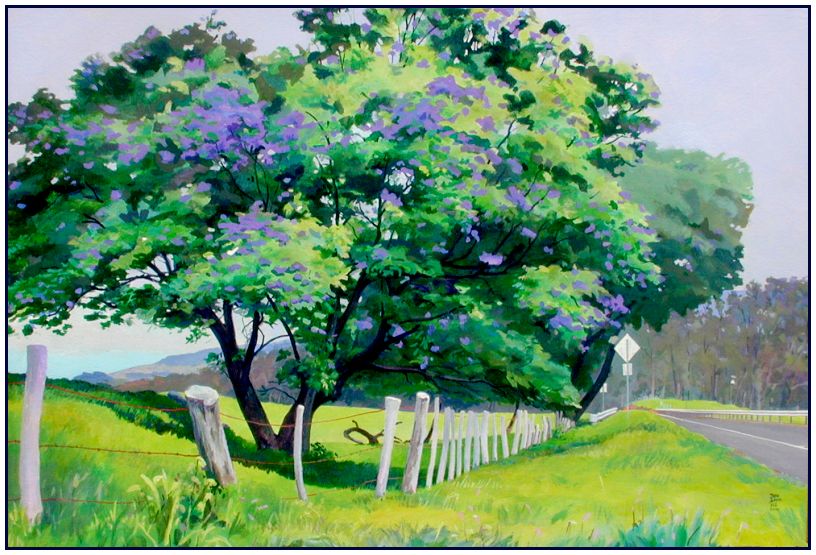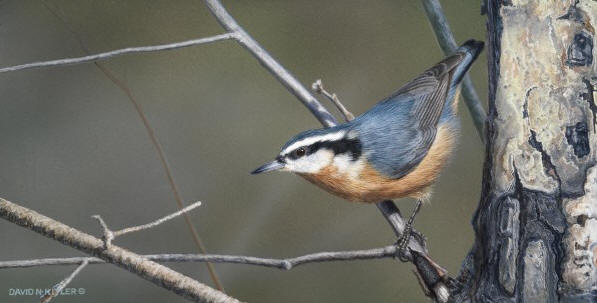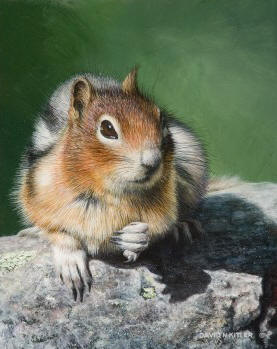Realistic Painting Demos by Sorin
"Bluebonnet Time", demo by William Hagerman
William Hagerman demonstrates his realistic oil painting methods in a free eBook showing a step by step progression of the landscape painting shown above.
Hagerman writes: "My painting method is a layered approach, therefore it is developed in successive stages. After drawing my composition on canvas with thinned paint ...I begin my block-in using full color mixtures starting with the darkest mass first. By starting this way, I find it easier to judge the value relationships between adjacent areas."
Color: How to see it and how to mix it
Artist William Hagerman writes: "Understanding color and how it behaves is a fascinating subject and whole books have been written on color theory alone. There's so much on the subject of analyzing and mixing color, how our eyes perceive it to the psychology of color, not to mention how pigments react in mixture, that it can become rather confusing in a hurry and even frustrating when you just want to know how to mix a particular shade of green or any other color."
Pigments: What are they?
For the artist there are some important factors to consider regarding pigments when selecting them for use. Read more on this topic at Hagerman Art.
Painting with Four Colors - A Dog Portrait
Watercolor painting lesson from Cyrille Jubert. Cyrille says: In this lesson I'll show you how you can paint with just three colors plus one and get a portrait rich, vivid and colorful. The same applies, no matter the subject....an object, a landscape or a character.
Hyper-realistic dog by Cyrille Jubert
The hyper-realistic portrait of white Labrador by Cyrille Jubert. Cyrille shows steps that detail how to paint in watercolor. Eyes and nose are essential elements in carrying out the hyper-realistic portrait of a dog, plus the nuances of "white" fur.
(Note: Page is in Spanish, if you need to translate, go to Google Translate, select language and type in text or a website address to translate entire page.)
Grand View Ranch House
Step by step tutorial by artist and TV personality Stefan Baumann . Paint this ranch house in the snow (oils).
You Can Paint Your Pet - Robert Hagan
Why not create a portrait of your own dog! In the video below, Australian artist Robert Hagan teaches you how to paint the fun way. Learn step by step how to paint!
'Fall Run' Western Speed Painting By Robert Hagan
The Aspen Valley in Colorado in Fall is stunning. The red rock bluffs drop vertically to the small river valley floor and are the perfect backdrop to the Aspen trees as they switch color from green to yellow to orange during September. Some change earlier than others so there is inevitably a mix of these colors for the sort 3 week period of transformation.
Well add a river and then some horses running loose and we have a painting that should get everyones attention - especially if they are mid stream and on the burst! Robert Hagan demonstrates painting such a scene in the video below!
Lori McNee's Tips for Painting Animal Fur
Lori McNee demonstrates how to paint animal fur as she paints a realistic monkey in water soluble oil paint. Watch as it comes to life.
Pigeon Point, Justin Clayton
Video demo of Justin Clayton painting Pigeon Point lighthouse in Pescadero California. A shoreline seascape in oils.
Constructive Anatomy, George Bridgman
Free book on drawing the human anatomy. "Constructive Anatomy" was written in 1920 by George B. Bridgman, instructor in drawing and lecturer on the construction and anatomy of the human figure. This is a digital copy of a book that was preserved for generations on library shelves before it was carefully scanned by Google as part of a project to make the world’s books discoverable online. It has survived long enough for the copyright to expire and the book to enter the public domain.
Early Spring Jacaranda, Donald Jusko
Sedona Canyon, Jerry Yarnell demo
Here we have nearly 2 hours of video lessons from Jerry Yarnell as he demonstrates this canyon landscape acrylic painting. This is a large, detailed painting and video demo is presented in 11 segments (10 minutes each). "Sedona Canyon" is an example lesson from the full length DVD's available for purchase at YarnellArt.com.
Jerry Yarnell, Free Streaming Video
 |
| "Distant Thunder" J..Yarnell |
Hawaii Waterfall, Julie Gilbert Pollard
Splashdown, Julie Gilbert Pollard
In this series of photos, Julie Gilbert Pollard shows you her progression from an abstract preliminary study to this finished oil painting of children jumping into a river.
Article: How to Match the Correct Frame to Your Art
There are many important things to think about when framing any work of art and the numerous framing choices can leave you perplexed! Dan, at Empty Easel, explains "How to Match the Correct Frame to Your Art".
Article: How to Make Your Own Stretcher Bars for a Stretched Canvas Painting
If you ever get the urge to paint a canvas in a size or shape that the store doesn’t have; just pick up some wood, a saw and some canvas, and make your own. Dan, at Empty Easel, takes you through the process in this step-by-step demo for making your own stretcher bars.
Dan says: "I use materials and tools that anyone can find at their local hardware store, and often make large canvases for a tiny fraction of the price that it would cost me to buy them already made."
Blue Window, Allan Kirk
Allan Kirk's impressionistic watercolour exercise shows how to capture light and present the beauty that can be found in the simplest of subjects. The composition is brought to life by the way transparent watercolour is used to reflect the strong light and dark tones found under the southern French sun.
Masking a Painting Using Cellophane and Paper
David says: "There’s more than one way to mask an area of a painting to protect it from overspray, washes or contact. You can use liquid masking fluid, shelving paper, templates, plain paper and different types of tape.....I prefer cellophane."
More great tips from David Kitler in his book Painting Nature's Treasures in Acrylics
Jungle Canopy, David N. Kitler
 |
| "Jungle Canopy" |
Follow this work in progress as David N. Kitler demonstrates this large, oversized painting of an exotic scene with a series of 39 photos. David paints this mural with acrylics using small and large brushes, spray bottles of paint, household sponges and lots of reference material.
Nuthatch, David N. Kitler
Article: 5 Ways to Avoid Clichéd Art
Wildlife artist David N. Kitler strives to keep his art fresh by breaking up the standard composition—working with multiple images and views of his subject. Here are some of his tips on how to avoid clichéd wildlife art.
1. Don't always opt for the cute or marketable subject.
2. Travel to where your subject is. Experience its environment.
3. Take time to observe and learn about your subject.
4. Gather information with field observations and sketches. Keep a journal.
5. Offer the world something not already rendered a thousand times before.
1. Don't always opt for the cute or marketable subject.
2. Travel to where your subject is. Experience its environment.
3. Take time to observe and learn about your subject.
4. Gather information with field observations and sketches. Keep a journal.
5. Offer the world something not already rendered a thousand times before.
...reprinted from "Artist's" magazine
Subscribe to:
Posts (Atom)
























